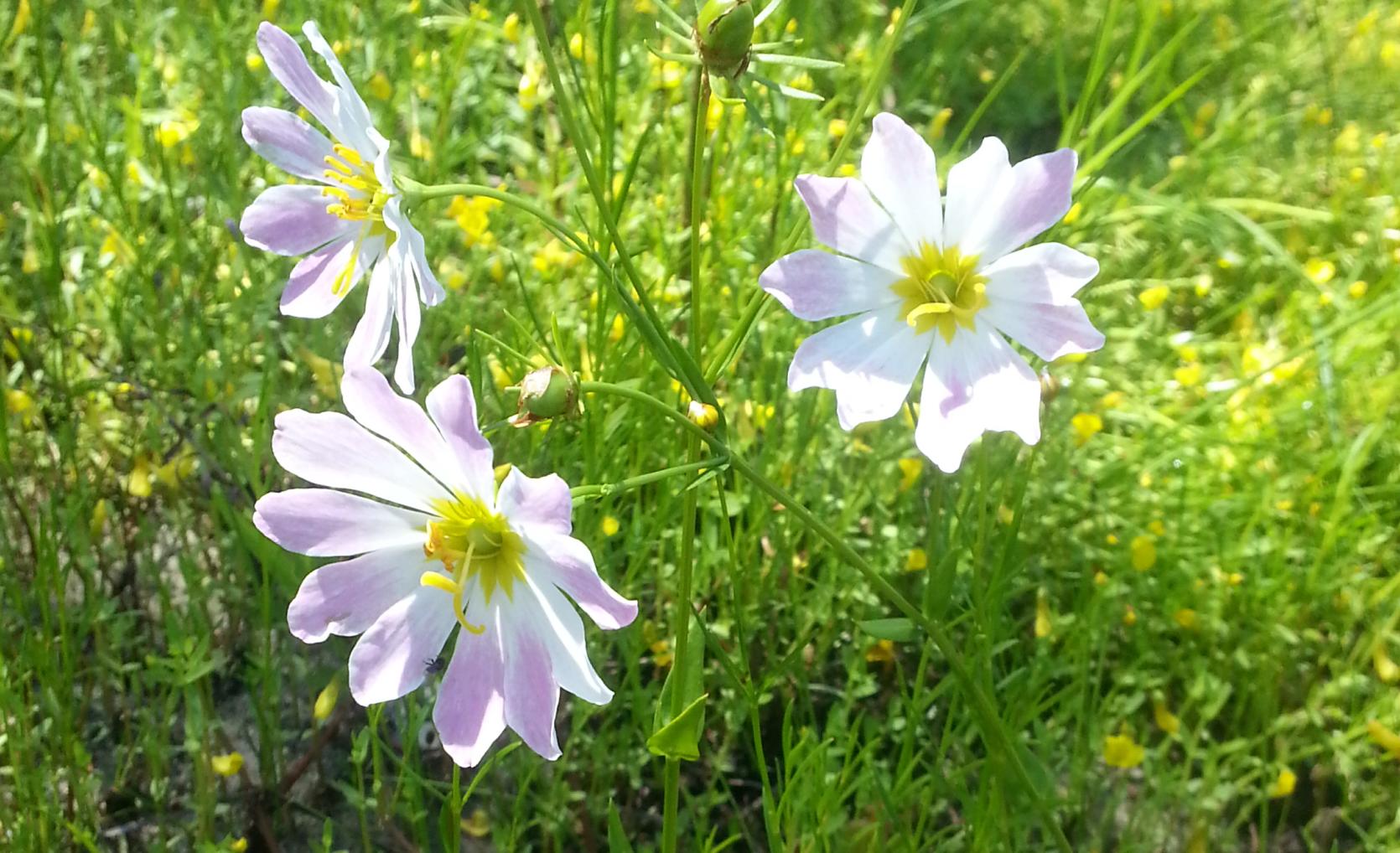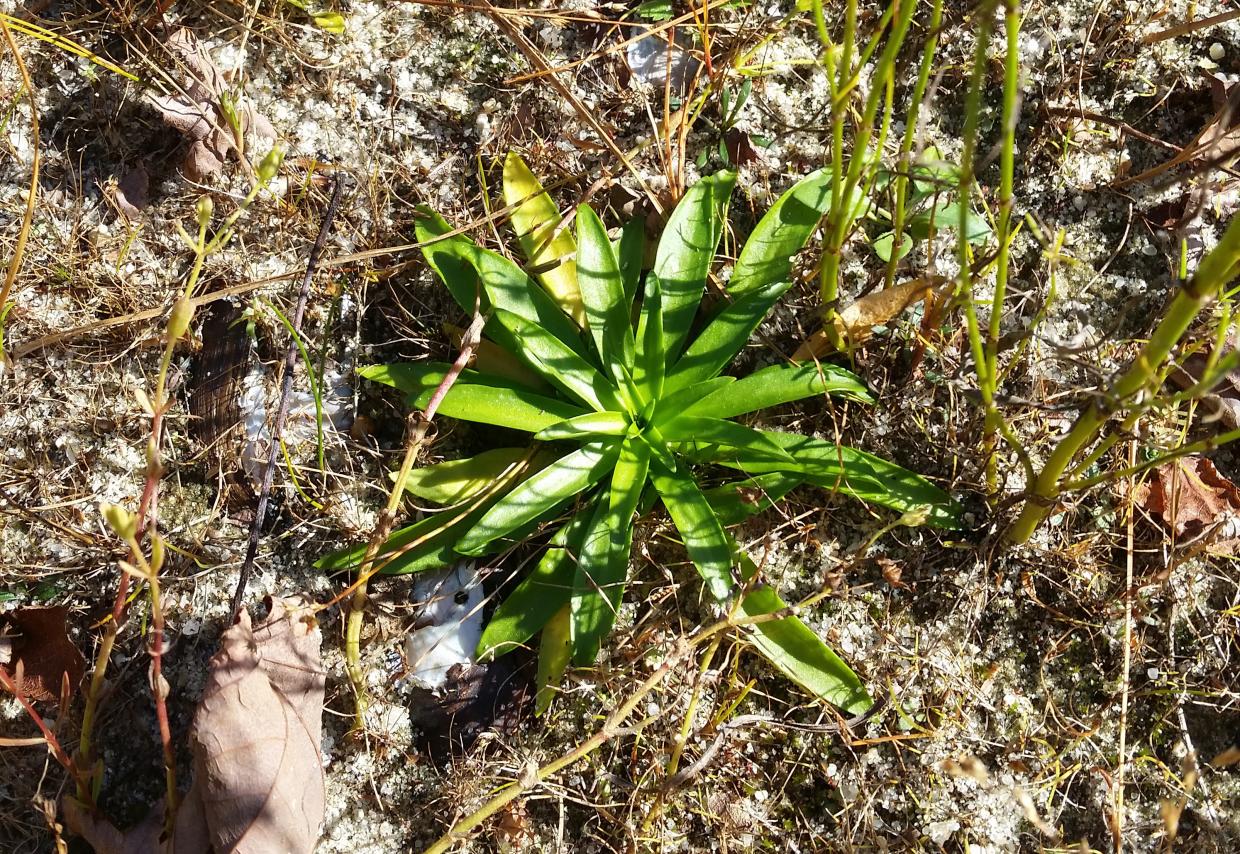- Division of Fisheries and Wildlife
- MassWildlife's Natural Heritage & Endangered Species Program
Media Contact
Media Contact, MassWildlife

The year 2020 marks the 30th anniversary of the Massachusetts Endangered Species Act (MESA)! To celebrate, MassWildlife will be highlighting one rare species each month as a Species Spotlight. Through the implementation of MESA, MassWildlife’s Natural Heritage and Endangered Species Program conserves and protects the most vulnerable animals and plants of Massachusetts and the habitats upon which they depend. Stay up to date on how MassWildlife is celebrating this important milestone by visiting mass.gov/30MESA
Description
Common name: Plymouth gentian
Scientific name: Sabatia kennedyana
Size: 12 to 28 inches
Range: Disjunct locations: Nova Scotia, Massachusetts, Rhode Island, Virginia, and North and South Carolina. State-listed in all locations, except in Virginia where it was introduced.
MA conservation status: Special concern
Federal conservation status: Not listed
Global conservation status: Rare
Fun facts
-
Plymouth gentian are known to be globally rare because they occur in only a few locations in the world, usually in low numbers. Massachusetts actually has the most globally robust populations of Plymouth gentian. However, it is still considered a species of special concern in Massachusetts, as about half of the known populations in the state have disappeared and it is important to protect the remaining ones.
-
Plymouth gentian could be confused with another locally endangered flower, the slender marsh pink. The slender marsh pink can be distinguished by 5 pink petals, while Plymouth gentian has 7 or more petals.
-
The flowers of this plant usually have mostly pink petals with a yellow center. There are a variety of color morphs, including some flowers with pink and white petals around the yellow center. Despite their beautiful appearance, they are legally protected from collection, possession, or sale.
-
Plymouth gentian received its common name from its native range in coastal Massachusetts; it grows along sandy and peaty shorelines of coastal plain ponds.
-
The basal whorl of leaves remains green over the winter, often seen under water.
Threats and conservation
-
Changes in hydrology due to climate change threaten the habitat of this species. As ocean levels rise, freshwater levels also rise. If water doesn’t drop to expose an open sandy shoreline, there is no place for seeds of Plymouth gentian to grow.
-
Off-road vehicles driven along the edges of coastal plain ponds are one of the major threats to this species.
-
Beach raking on coastal plain ponds can destroy these (and other) rare plants.
-
Development, mowing of pond edge vegetation, and pond eutrophication (resulting from fertilizers and septic systems) are additional threats to this species.
-
In coastal plain ponds with abundant rare species, MassWildlife staff are working to control invasive plants that can outcompete native rare plants. MassWildlife also protects the ponds where Plymouth gentian is found through regulatory review of proposed development projects.
How you can help
-
Avoid the above activities that threaten the species and share this information with others.
-
Let MassWildlife know when and where you have observed Plymouth gentian! Click here to report rare species to MassWildlife using either the online Vernal Pool Rare Species reporting system (VPRS) or a paper form.
-
MassWildlife's Natural Heritage and Endangered Species Program (NHESP) is responsible for the conservation and protection of over 400 rare animals and plants, including Plymouth gentian. NHESP's work is primarily funded through grants and donations from supportive citizens. Donate to NHESP today.


